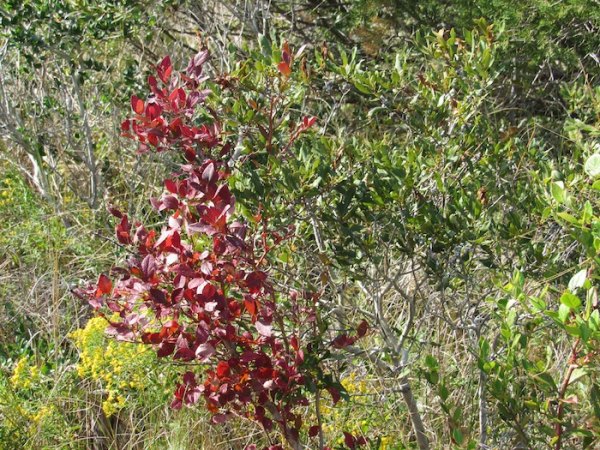Autumn on the Sandbar
There’s no need to visit the Blue Ridge Mountains or Appalachia to see fall foliage or fauna producing brilliant, bright colors this year. No sir-ee! ‘Cause we’ve got plenty of color and scenic views right here on Ocracoke Island! Sure…we don’t have any rolling hills or overlooks where you can see miles upon miles of endless mountain tops, but we do have maritime forests and salt marshes, and they are full of color!
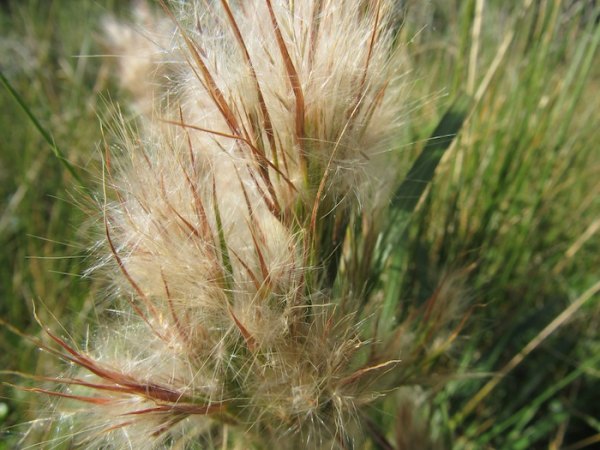
Just take a walk through the Hammock Hills Nature Trail or the Off-road Vehicle (ORV) Sound access ramp next to the trail, and your eyes will be greeted with a variety of colors from greens to yellows, purples and pinks, reds, oranges, and, of course, some brown grasses. And that’s just the fauna. (One can also see a variety of insects, but we’ll get to that in a bit)! Both places are located along the southbound lane of Highway 12, across from the National Park Service Campground, and there’s even a fabulous little parking lot for those of you (like myself) who do not have an off-road permit and/or a 4WD vehicle.

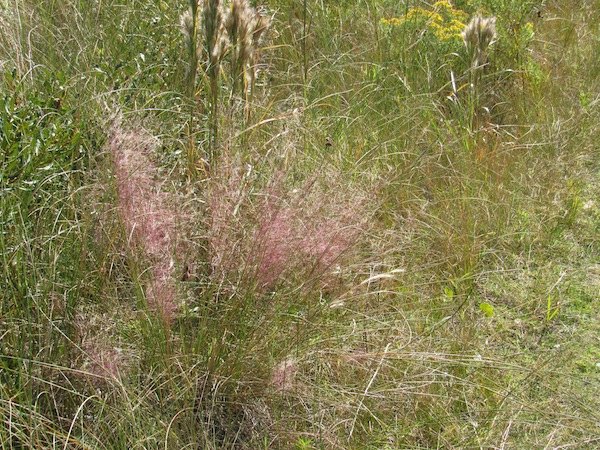
The first part of our walk (I always have my insane-o-dogs in tow, or maybe they have me in tow, but you get my point) was down to the Sound via the ORV ramp, where, from the start, the colors were absolutely stunning. Wild asters, ranging in color from a very light to a deep purple, lined the ramp almost entirely, and bunches of Goldenrod were blooming too. Some Goldenrod was blooming in large colonies, while other smaller clusters were mixed in with the asters, creating fantastic scenery. Tiny purple Gerardia, or “pink fox gloves”, can also be seen along this route, but they typically only bloom from August through October, so if you want to catch a peak at this delicate looking flower, you had better hurry. You can also spot some pretty neat grasses out there too, such as Purple Lovegrass, which fits its name as it is a lovely shade of purple, as well as fuzzy-looking dune grasses and Cat Tails.
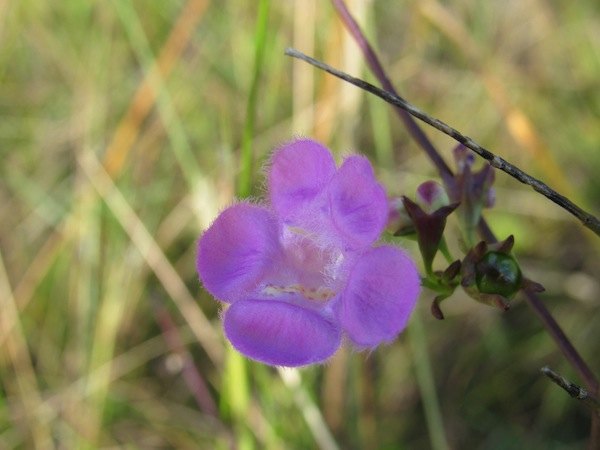
And amongst all these flowers and billowing grasses you’ll get the chance to see some leaves that have turned, which are easy to spot against the Cedar tree and Pine backdrop. Some of the colorful leaves were in trees, others on vines and in the brush, but even just a few are noticeable. Something else I noticed was dozens, and I mean dozens of butterflies. They were feasting on the Goldenrod, flittering and fluttering all along ramp! It was a bit surreal seeing so many at one time, and they were beautiful! If you’re not one who admires flora and fauna, seeing these butterflies is well worth the three-mile trek from the Village to the parking area next to the ORV ramp.
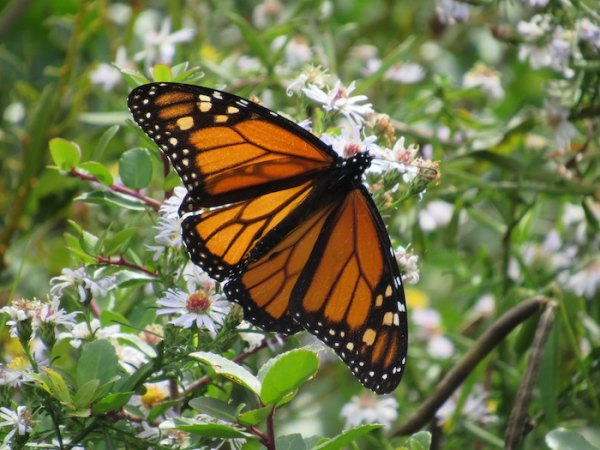
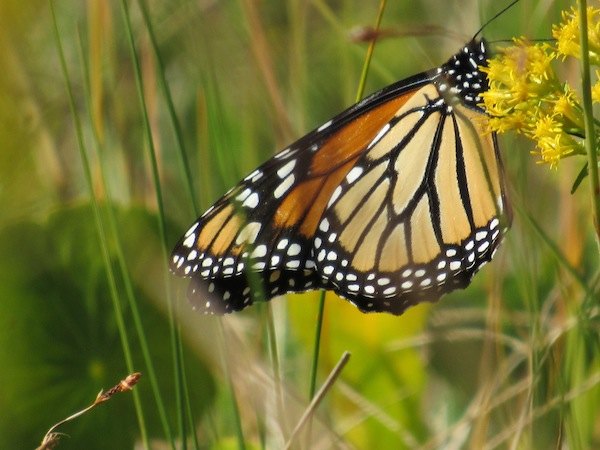
Once we (again, referring to myself and my insano-dogs) ventured onto the Hammock Hills Nature Trail, which goes through a maritime forest, the three of us enjoyed walking on a soft, sponge-like surface. The surface is fabulous and occurs naturally due to all the fallen pine needles. But watch your step; tree roots and spider webs are plentiful throughout the mile loop trail, and like many before me and probably many after, walking into a spider web will bring out the ninja in anyone, and potentially a good laugh for any witnesses. And I sincerely doubt anyone enjoys tripping over roots and busting their face, so just be aware.
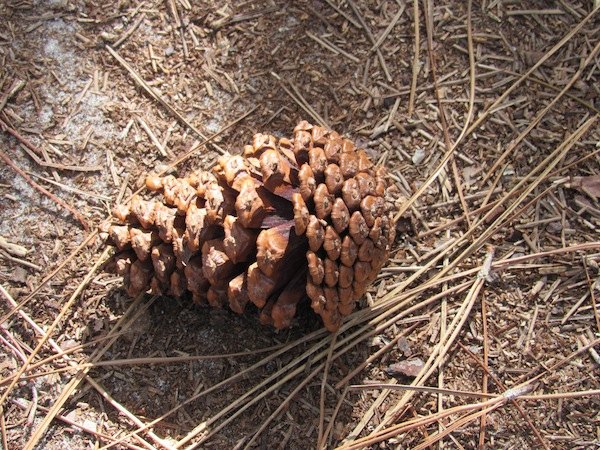
Ok, anyway, back to trees and stuff. At the trail’s entrance you can get another opportunity to see tons of butterflies, only this time they’ll be taking nectar from the wild asters that are blooming. Once you get to the first boardwalk, the butterflies diminish, but the beauty of the maritime forest begins. Some of the most gorgeous colors are brought to us by our dear foe Poison Ivy, but it’s not like one can’t “Ooooh” and “Ahhhh” over the pretty colors they produce this time of year. Just don’t touch them…or let your dog(s) or children get anywhere near them. But you can totally admire the colors all you want.
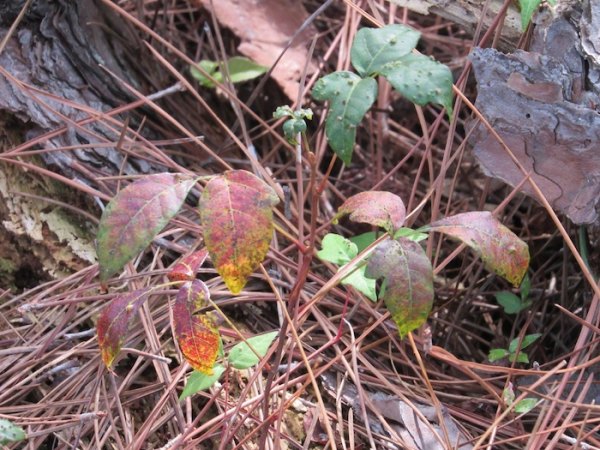
I also noticed bright colors in many of the hardwood trees within the forest. Live Oaks have been around since way, way, waaaaaaaaaay back in the day, and they thrive in the salty, sandy environment that is unique to this country’s east coast. The canopy, which consists predominately of Live Oaks and Pines, provides a wonderful retreat for all types of wildlife, and is a refuge for animals during severe weather. Maritime forests typically occur in eastern coastal areas along sounds, where they are less affected by harsh winds and the salt they bring with them (courtesy of the Atlantic Ocean) and are protected, in part, by sand dunes. The canopy is also a nice source of naturally occurring sounds from coastal and song birds (it’s migration time again!), and the soft pines and fallen leaves will allow visitors to hear little critters scampering around as well.
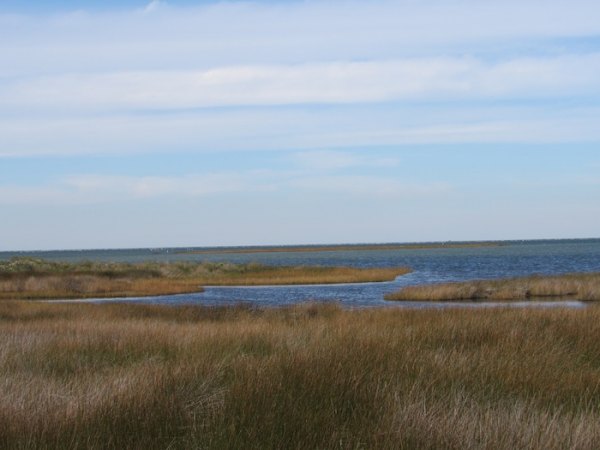
Once you reach the wooden deck overlooking the Pamlico Sound (it’s about the half-way point), you’ll get a marvelous view of the salt marsh and blue water. These areas are home to many types of wildlife, ranging from insects, to reptiles, to fishes, and birds. But I implore you to wear bug spray while you’re out admiring the sights; mosquitoes are still feasting, and no one enjoys mosquito bites.
Now, start planning and packing for your fall trip to Ocracoke Island! Ready…set…GO!
P.S. The headline may be a bit of an exaggeration, but I’m allowed that every once-in-a-while. I haven’t exaggerated in like 1,000 years, so it was time. And fall really is pretty on this little sandbar.
